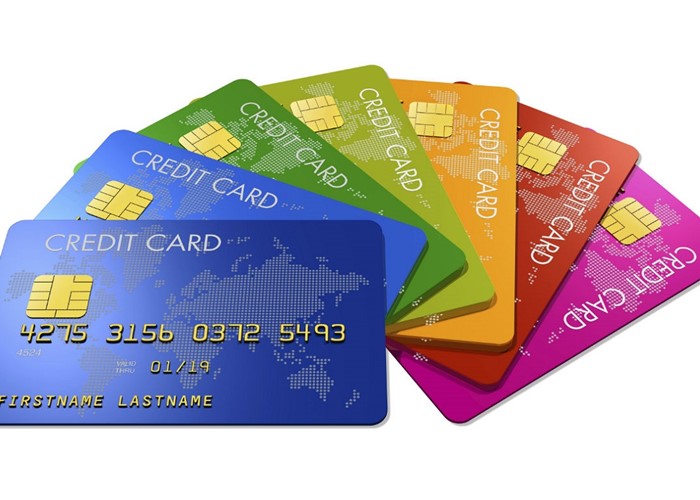The new credit card that offers 5% cashback on ALL spending

This new card from Capital One offers a great rate of cashback, and will be accepted everywhere!
Capital One has launched a new World MasterCard, which in my view is potentially even better than the previous market-leading cashback credit card from American Express. Let’s take a look at the two cards, and why I think Capital One’s offering is so good.
The American Express Platinum Cashback card
For a long time now American Express has led the way when it comes to cashback. Its Platinum Cashback card offers a huge 5% on all of your spending in the first three months, up to a maximum of £100 in cashback.
After that, the rate of cashback you enjoy is tiered, depending on how much you spend on the card over the year. So if you spend less than £3,500, you’ll get 0.5% cashback, for sums between £3,500 and £7,500 you’ll get 1%, and if you spend more than £7,500 that cashback rate moves up to 1.25%.
What’s more, there’s no annual fee which eats into your cashback, and you pay 0% interest on your purchases for the first six months. So you’ll be able to really cash in from the start, interest free!
How does this add up? Well, with the Platinum Cashback card if you spend £12,000 in that first year, you’ll be looking at around £203 in cashback. Not bad - but can you do better with thenew Capital One card?
The Capital One World MasterCard
This week, it's clear Capital One has declared war on Amex with the launch of its World MasterCard. Because when you look at its features, it will no doubt seem strangely familiar...
For starters, during the first three months, the cashback rate you’ll enjoy with the World card is 5%, up to a maximum cashback total of £100. After that, tiered rates apply, between 0.5% and 1.25%, depending on how much you spend. Spooky, huh?
But at this point, there is a clear difference between the two cards. In order to get 1.25% cashback on your spending on the World card, you will need to have an outlay in excess of £10,000 on the card over the year, rather than £7,500 with the Amex, a difference of £2,500. That’s the equivalent of more than £200 extra a month on your credit card.
Meanwhile, you’ll have to spend £6,000 on the World card before you get 1% in cashback, again £2,500 more than with the Amex.
Related how-to guide

Make some extra money
It’s easy to increase your income using these tips.
See the guideSo you have to spend more on the Capital One to enjoy the full rate of cashback, and at no point is that spending interest free. With that in mind, how can it be better than the Amex?
Where you spend
As we are reminded whenever we write about any sort of American Express credit card, there is one big flaw with American Express – it is not accepted everywhere. So while you may intend to put all of your monthly spend on the card, in all likelihood at least some of your spending will have to go on an alternative piece of plastic, whether debit or credit. And that can be the difference between hitting the top tier of cashback or missing out when you come to the end of the year.
The Capital One card is a MasterCard, which means you’ll face no such issues. MasterCards are accepted pretty much everywhere, so you really will be able to put all of your spending on it, wherever you choose to splash your cash. So not only are you more likely to hit the top tier of cashback, but you will earn cashback on every penny you spend, not just every penny that the retailers will let you spend with your Amex.
It’s not for everyone
That said, the World card is fairly exclusive. You’ll need a perfect credit rating, a salary in excess of £20,000, and you must own your own home to qualify.
The best of the rest
These aren’t the only two cashback credit cards out there. MBNA offers a decent card in the shape of its Visa with Cashback, which offers 1.25% on all spending on supermarket and fuel purchases, and 0.5% on all spending elsewhere. This is clearly a decent option if you don’t spend a huge amount on your card each year, but you do tend to use your card a fair bit at the supermarket!
Related blog post
- The Consumer Credit Counselling Service writes:
The Home Counties: the home of debt
Debt isn’t just found in the inner-cities…
Read this post
Don’t change your spending habits!
At this point, it’s worth reiterating some fundamentals when it comes to using cashback credit cards. For starters, there is absolutely no point going for one of these cards if you’re not the sort of person who pays off their bill in full each month. Otherwise, the interest on your debt will far outweigh the benefits of the cashback.
And while it’s a good idea to put as much of your spending as possible on the card, that’s not an excuse to spend more than usual. Again, there’s no point racking up an extra couple of quid in cashback if you’ve spent beyond your means and will be financially stretched for a while. Use these cards to net yourself some extra cash - not to get into debt!
More: Compare credit cards | Shun this sneaky savings swindle | 10 top tips for personal loans
Comments
Be the first to comment
Do you want to comment on this article? You need to be signed in for this feature